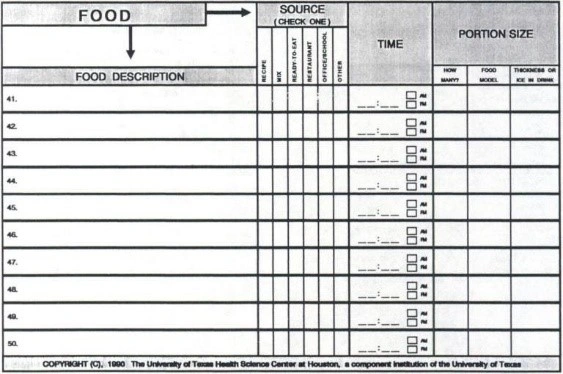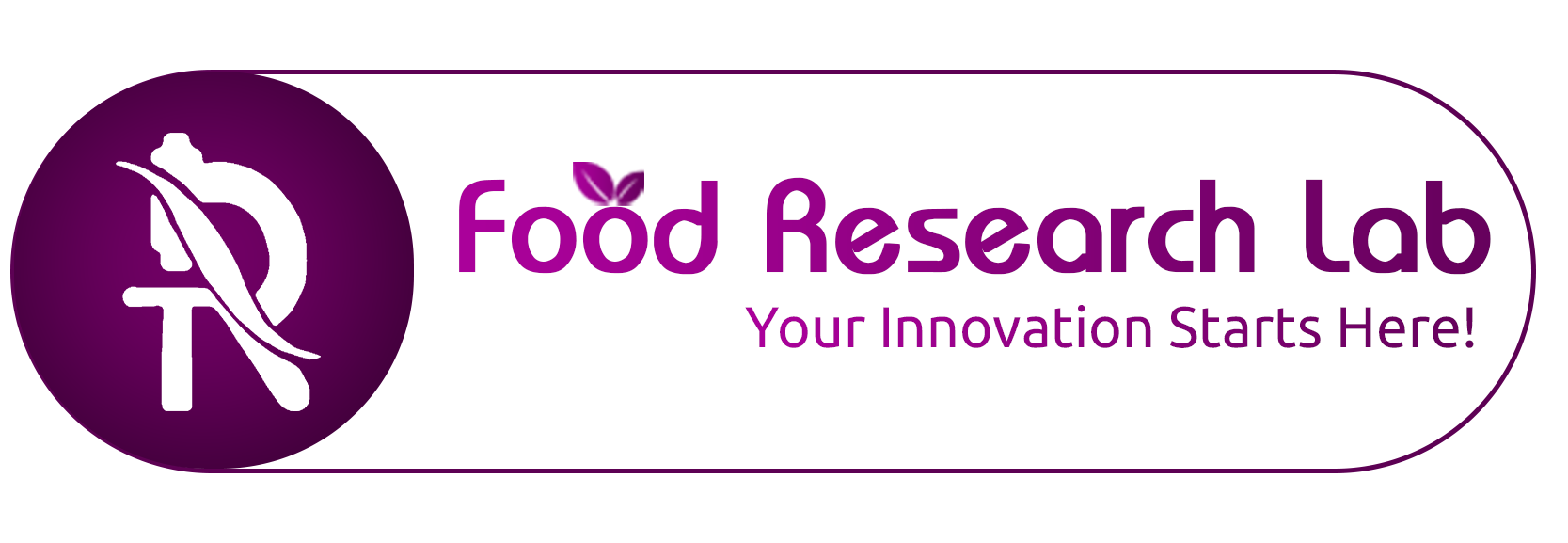Comprehensive Guide to 24-Hour Recall: A Key Dietary Assessment Method
There are numerous dietary survey methods available, each with its own set of advantages and disadvantages that should be carefully considered based on the study’s objectives, the required level of precision, and the resources at hand. Among these methods, the 24-hour dietary recall (24hDR) stands out as one of the most used approaches. The 24-hour dietary recall (24hDR) method has been systematically employed across various editions of the National Health and Nutrition Examination Survey (NHANES) in the United States [1].
The 24-hour dietary recall (24hDR) is a subjective and retrospective dietary assessment method that relies on direct communication with the respondent. This can occur through face-to-face or telephone interviews or be self-administered using computer-based programs, such as online platforms that collect retrospective self-reported data [2].

Source: Adopted and modified from 24-Hour Dietary Recall Form (Excerpt), Food Intake Analysis System: University of Texas-Houston, School of Public Health
The 24hDR involves the precise recollection, description, and quantification of all foods and beverages consumed during the 24-hour period prior to the interview, or the day before, beginning from the first intake in the morning and ending with the last consumption at night (or later, in cases where individuals eat or drink during the night). The collected information must be detailed, including:
- Type of food and its characteristics: Whether fresh, precooked, frozen, canned, or preserved.
- Quantity consumed: Net amounts based on measurable portions.
- Method of preparation: Cooking techniques and ingredients used.
- Additional details: Commercial brands, sauces, dressings (fats and oils), condiments, liquids, multivitamin supplements, food supplements, and the time and location of consumption (e.g., at home or away).
- It can be done in two main approaches: the single-pass approach and the multiple-pass approach.
In the single-pass approach, the individual reports all foods and beverages consumed in a single 24-hour period, providing insights into short-term dietary intake. However, it may not reflect typical dietary patterns, so multiple recalls are recommended for more accurate assessment.
The multiple-pass approach involves a staged method that is more suited to human cognition. Widely used in national surveys, it includes five stages:
- Quick list – a list of consumed foods and beverages,
- Forgotten foods – probing for forgotten items,
- Time and occasion – recording the time and context of each food,
- Detail cycle – capturing detailed information about portion sizes, preparation, and brands,
- Final probe – confirming any other consumed items.
Participants in studies often use web-based tools like Foodbook24, which follows this method. The tool allows users to select meal types, enter consumed foods through text search, estimate portion sizes, and review their intake before confirming forgotten foods. This approach helps ensure more accurate and comprehensive dietary assessment. [3][4]
Data is typically collected through open-ended or structured questionnaires (in paper or digital format). Reliable software designed specifically for dietary recalls is commonly used for digital data collection. The method also requires support instruments to ensure accuracy, such as:
- Visual aids like photographs, illustrations, and three-dimensional models of portion sizes.
- Examples of common household measures (e.g., cups, spoons).
- Detailed recipe ingredient breakdowns.
On average, the interview process takes 20 to 30 minutes to complete.
The success of the 24hDR method depends on several key factors:
- Trained Interviewers: Skilled personnel are necessary to conduct interviews and ensure consistency.
- Detailed Protocols: A comprehensive procedural guide is required to standardize the process.
- Multiple Recalls: To estimate usual dietary intake, a minimum of 2 to 5 recalls is recommended. Common practice suggests 2-3 recalls are sufficient, depending on the study's objectives, the nutrients being assessed, and the sample size. Ideally, these recalls should be conducted at different times of the year to account for seasonal variations in food consumption.
In population-based studies, interviews are often conducted in respondents' homes. This approach provides additional advantages, such as:
- Facilitating household measure quantification.
- Capturing brand names and confirming the composition of multivitamin/mineral supplements and food additives.
Pros of 24-Hour Recall:
- Ease of Administration: Simple to conduct and requires minimal training.
- Detailed Information: Captures detailed data on food types, portions, and preparation.
- Short-Term Insight: Useful for understanding dietary intake over a specific day.
Cons of 24-Hour Recall:
- Memory Bias: Relies on participants’ memory, which may lead to inaccuracies.
- Single-Day Limitation: A single recall might not accurately reflect an individual's usual eating patterns.
- Labor-Intensive: Repeated recalls for accuracy can be time-consuming and resource intensive. [5]
- Reliance on Memory: Accuracy depends on the respondent’s ability to recall their intake, which may lead to omissions or inaccuracies.
- Recall Bias: Individuals may selectively report certain foods, a common issue with self-reported methods.
- Cost and Resources: High costs and resource demands arise from the need for trained interviewers, coders, and data processing tools.
- Time-Consuming: Coding dietary data into nutrients requires significant time and expertise, often needing specialized software.
- Unrepresentative Data: A single recall does not reflect habitual dietary patterns, requiring multiple recalls for reliability.
- Challenges with Specific Groups: Younger children and the elderly may struggle to accurately recall their food intake.
- Labor-Intensive: Paper-based recalls increase the workload due to manual data entry, cleaning, and processing. [6][3]
Summary
The 24hDR is a versatile and widely used dietary assessment method, suitable for various research objectives. While it requires careful planning, trained personnel, and robust protocols, its ability to provide detailed, individualized dietary data makes it a valuable tool in nutritional studies. Proper implementation and sufficient recall sessions help ensure the reliability of the data, making it an essential component of dietary research.
The Food Research Lab (FRL) leverages the 24-hour dietary recall (24hDR) method as a critical tool in compliance studies, particularly for tracking adherence to dietary and medication protocols in clinical and healthcare settings. Here’s a brief overview of how FRL implements this method effectively:
Dietary Compliance Tracking
- Digital e-Diaries and Recall Methods:
FRL integrates traditional 24-hour recall interviews with digital e-diaries, enabling participants to document their food and beverage intake comprehensively. This hybrid approach ensures detailed and accurate data collection while minimizing recall bias. - Evaluation of Adherence:
By analyzing the recorded intake, FRL assesses participants’ compliance with prescribed dietary regimens. The focus is on matching actual consumption with the dietary plans designed for specific clinical outcomes, therapeutic interventions, or health improvement goals. - Detailed Nutritional Analysis:
The 24hDR data is used to identify any deviations from dietary prescriptions, such as under- or over-consumption of nutrients, inappropriate food choices, or inconsistencies with portion sizes.
Medication and Food Compliance in Healthcare
- Integrated Monitoring:
FRL incorporates the 24hDR into broader compliance studies to monitor dietary behavior in conjunction with medication schedules. This ensures that dietary restrictions or requirements are aligned with medical treatments. - Customized Feedback:
The data collected through the 24hDR allows FRL to provide tailored feedback to participants, helping improve adherence to dietary and medication protocols.
Benefits of Using the 24hDR in Compliance Studies
- Accuracy: The detailed recall of food types, preparation methods, portion sizes, and consumption timing ensures precise tracking of dietary behavior.
- Flexibility: The method can be adapted for various healthcare applications, including monitoring compliance in clinical trials, chronic disease management, and public health interventions.
- Participant Engagement: Using digital tools and structured protocols, FRL ensures a user-friendly experience, enhancing participant engagement and data reliability.
Conclusion
By incorporating the 24-hour dietary recall method into compliance studies, FRL provides a robust framework for evaluating dietary adherence. This approach not only ensures the accuracy and reliability of data but also supports the development of personalized dietary interventions to enhance health outcomes.
Key contact
For further information or prices please contact us:





